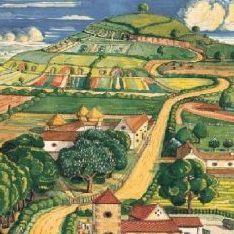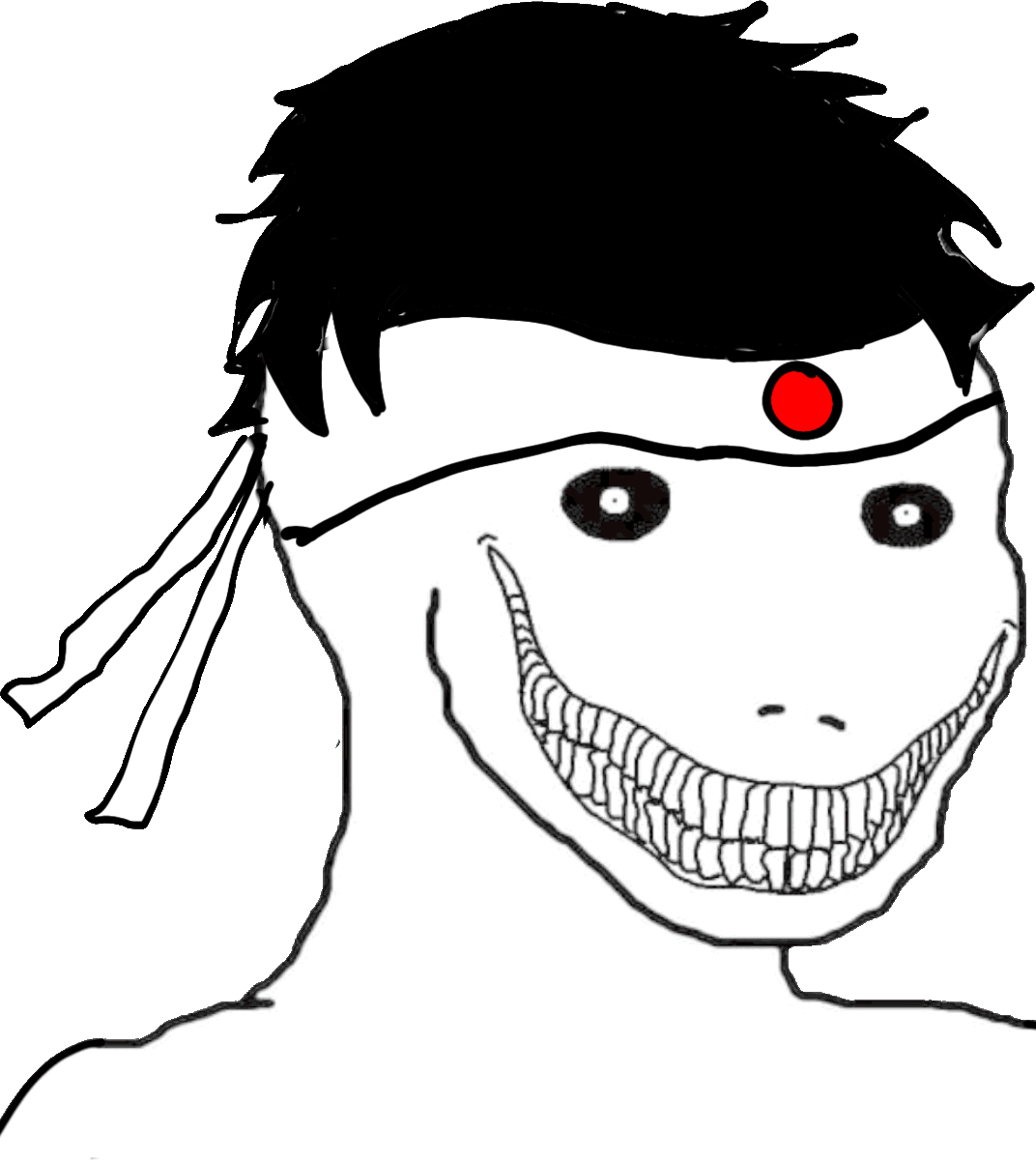Easterners 東方人
Language, History, Culture, Religion
Homeland - 帝國
The Easterner peoples homeland is Aeldin (Known to the Easterners as Ai-Zho), located within the south-eastern peninsula of that continent. There is no one eastern nation, but many different Kingdoms and Empires, each with different cultures and languages.
Further East of the Aeldin Peninsula is the landmass known as Xia, not pictured here. However, Xia and the eastern Peninsula of Ai-Zho serve as the main homelands of the Easterner peoples and their histories run parallel until the third era.
History - 歷史
This is a brief summary of the history of the Eastern peoples.
Tribal Era
The first people to inhabit the eastern peninsula of Ai-Zho are the Elves. After centuries as masters of the land, the Elves are gradually driven out by several waves of human migration. These humans settle in the mountains and plains of the eastern peninsula and become the predecessors of the Eastern Peoples.
The First Era
The fertile river valleys of the peninsula allow for the mass-cultivation of rice. Rice becomes core to the primitive humans of the east, and hundreds of petty rice-kingdoms form along the peninsula. During this age there is very little political unity or cultural sophistication. Most small kingdoms speak their own local language/dialect, and worship a local minor god.
Most Eastern peoples settle into sedentary, rice farming lives
The Second Era
The Hou-zi make landfall on the Eastern Peninsula, and come into contact with the humans there. The Hou-zi are a race of sentient monkeys, who despite their beast-like appearance possess superior technology and cultural sophistication. The Hou-zi owe their allegiance to Hou-Shen, their immortal God-King, who rules the far off Empire of the Golden Sun.
The monkey-folk easily conquer all the primitive, feuding rice-kingdoms of the humans, and the whole of the Eastern Peninsula becomes a province of the Hou-zi Empire. During this period, the Hou-Wen (Classical Chinese) becomes the lingua franca of the region, and all human subjects of the Empire are made to learn it.
The humans of the eastern peninsula slowly assimilate, adapting Hou-zi architecture, language, culture and religion. Through Hou-zi influence, small rice-farming villages like Heshan, Luzhou, and Changzi become bustling metropolises, thriving centers of culture and trade.
Under the Hou-zi, cities like Heshan become centers of culture and commerce
While most humans are second-class citizens in the Hou-zi Empire, a small class of rich human elites form. The most influential is the Li family, who have much sway in the Imperial Court, and possess their own private army. The Li rebel against the Hou-zi, gaining support from the various human peoples of the peninsula, and successfully free themselves from the yoke of Monkey rule.
Third Era
The newly formed Li Kingdom consolidates power in the Cathant region, and begin expanding outwards. They wage a war of conquest against their human neighbours until Cunyuan, Huinan, Oyashima and Zourhenia have all been subdued. The Li Dynasty is formed, and would rule over the Eastern peoples for 400 years.
Although the Hou-zi governors had been kicked out, the Hou-zi actually remained a well-respected minority within the Li Dynasty, valued for their cultural knowledge, from which the Eastern Peoples had borrowed a lot from.
Around this period, Hou-Zi monks from the far-away Hualian monastery arrive at the port of Zhuhai. They are missionaries of a new religion began by their prophet, Hualian. Hua-jiao becomes very popular among the commoners of the Eastern Peninsula, and spreads like wildfire among its peoples.
The official language of the Li Dynasty at this time is Li-Wen, a derivative dialect of the Hou-zi tongue. But regional languages are still spoken across the Empire, the most notable being Oyashiman.
Fourth Era
The Li Dynasty has ruled for nearly 400 years, and has become prey to stagnation and inner turmoil. Taking advantage of this, discontent vassals all over the Empire declare their independence. The first to do so are the Oyashimans, who had only been occupied around 80 years. They fight a bloody war with the Li authority. The rebels are victorious, and the Oyashiman warlords found an independent Shogunate based in the city of Yamatai.
Gradually, more and more peoples seceded. Cunyuan, Zhourennia and Huinan all form Kingdoms of their own, the era of Easterner unity is over.
Finding their populations in their homelands burgeoning, the Eastern peoples get on their ships and sail to lands far away from Ai-Zho to seek their fortunes. Pockets of Oyashimans, Cathantians and other Eastern Peoples have been seen on inhabited Continents from Anthos to Atlas over the last few centuries.
Cultures and Peoples 民族
A list of the major cultural regions and ethnic groups of the Eastern Peninsula
Li and Xian
In Cathant, the Li family still rules, albeit over a rump state- a shadow of the Empire they once had. Their capital city is Heshan, which is still a thriving center of wealth and culture. While the Li once ruled over many peoples, the ethnic group that inhabited the Cathantian heartland of the Empire were called Li-Ren- the people of Li. Like their spiritual successors, the Hou-zi, the Li people value Jade above all things, which is associated with power and class.
In the nearby continent of Xia live the Xian, they are identical in customs to the Li, but consider themselves a seperate people, as they rebelled from the Li Dynasty early in the third era and now have a seperate history of their own.
The Li and Xian are roughly analogous to Song Dynasty China.
Oyashiman
Just behind Cathant in population and influence are the beautiful Oyashiman valleys. The Oyashimans are a proud, war-like people who value politeness, discipline and loyalty over all things. Their society is extremely rigid, with a caste system that ranks butchers and merchants as bottom-tier, peasant farmers as mid-tier, and their noble warriors as high-tier. Oyashima is ruled by a Shogun, a military dictator with many minor lords, called Daimyos, under him.
The Oyashimans are roughly analogous to Tokugawa-era Japan.
Huinan
In the First Era, the Hui peoples did not settle into rice farms like other Eastern peoples did. Their land was a rugged steppe, suited better for hunting, herding and horsemanship. Even as the Hui lived for centuries under Hou-zi, and then Li suzerainty, they never completely lost touch of their nomadic, pastoralist roots. The Hui live in cities now, and their culture is greatly influenced by the Cathantians, but are still notably more rugged than their neighbours.
The Huinan people are roughly analogous to the 14th century Manchurian and Jurchen Peoples.
Zhou
The Zhou people, as they are called, inhabit the mountainous borderlands of the Zhourennia region of the Eastern Peninsula. They once held dominion over all Zhourennia, but were pushed out by the Cathantians during the Li Dynasty. What remains of their population now live in small mountain villages, herding goats and sheep and living a generally peaceful existence. The Zhou took to Hua-jiao in greater numbers than any other eastern people. Almost all Zhou people follow the Eightfold path of Hualian, and they have the highest per capita amount of Monks per people of all the Eastern Nations.
The Zhou people are roughly analogous to the Tibetan and Nepalese peoples.
Yuan/Salamduel
During the Li Empire, these peoples were called the Yuan, peoples of the Cunyuan province. Nowadays they refer to themselves in their native tongue- Salamduel, which simply means “the people”. The Salamduel inhabit the Cunyuan region, and are often the victims of Oyashiman imperialism, and have managed to fend off the Shogun and his warriors on three separate occasions in the last 200 years. The Salamduel are the best potters in the eastern peninsula, and make great barbeque.
The Yuan/Salamduel are roughly analogous to Joseon Korea.
Languages 語言
Li-Wen
Li-Wen (The Tongue of Li) is the Lingua Franca across all the Easterner peoples. Although there are many regional languages, Li-Wen is the tongue that all Easterners must learn so that peoples of different ethnic groups may communicate with one another.
Li-Wen is derived from the Hou-zi language (Hou-Wen), and people who speak Li-Wen can converse with the monkey folk with a solid degree of mutual intelligibility. It is the native tongue of the Li people, but is spoken as a second language across all the Eastern Peninsula.
Additionally, all Eastern Languages use the Li-script as their primary writing system.
Li-Wen is the equivalent of Mandarin Chinese. The Li-script is traditional chinese characters.
Oyashiman
Oyashiman is the tongue of the Shogunate of Oyashima. Unlike the Li of Cathant, the Oyashimans did not assimilate linguistically to the Hou-zi, and retained their ancient pre-contact tongue. Oyashiman is regional language, but most educated people across the Eastern Peninsula can speak it.
Oyashiman is the equivalent of Japanese.
Huinan-Hua
Huinan-Hua is the tongue of the Hui peoples. In the modern era, this language is limited mostly to the rural areas of Huinan, amongst lower class people and commoners. The nobility of Huinan mostly speak the language of the Li. Huinan-Hua endures, but it is unsure for how long.
Huinan-Hua is the equivalent of Mongolian. (As the Manchu language is mostly extinct).
Salamduel-Eo
The language of the peoples of Cunyuan survives, despite efforts by the Oyashimans and the Li to suppress it over their various centuries of conquest and imperial rulership. This tongue is quite similar to the Oyashiman tongue, but scholars believe it has an entirely different origin to the other Eastern languages.
Salamduel-Eo is the equivalent of Korean.
Zhou-Hua
Zhou-Hua is the language of the mountain-dwelling Zhou people. It is a regional language with significantly less native speakers than Oyashiman or Li-Wen, but it has value as a liturgical language. As the Zhou people are the torchbearers of the Hua-Jiao faith, many religious scriptures are written in Zhou-Hua, and scholars from all over the Eastern Peninsula learn this tongue so they can better understand the Eightfold path of Hualian.
Zhou-Hua is the equivalent of Tibetan.
Religion
Scripture depicting Hualian - the Prophet
Religion in the Eastern Peninsula is incredibly non-homogenous, and very syncretic. Each region has its own folklore and gods, down almost to as micro a level as individual villages, which will often have a local patron spirit.
With that said, Hua-jiao is the most widespread religion amongst eastern peoples, with a healthy amount of followers in all of the Eastern nations, with its strongest foothole in Cunyuan, Cathant and Zhourennia. Hua-jiao was introduced to the Easterners by missionaries of the Hou-zi prophet, Hualian, who achieved enlightenment by discovering the the Four Divine Truths and the Eightfold Path to living a good life. The Eightfold path that Hualian dictated upon his disciples serves as the doctrine by which many Easterners live today, and Hualian himself is considered a Godly prophet who will someday lift their souls from the suffering of this earthly world.
Most Easterners believe in some form of reincarnation cycle, and the concept of Karma- the idea that one's actions are all part of a cosmic balance, and that a person's goodness or evilness will affect not only their fate later in this life, but what they will be reborn into in the next.
In Oyashima, the people worship the Kami, an infinite amount of spirits that dwell in trees, rocks, rivers and other things. They have three main gods, Amaterasu the Goddess of the Sun and Izanagi the God of Creation with Izanami the Goddess of Yomi. The Oyashimans too have a set of eight virtues they follow, known colloquially as the Code of Life, a code by which their high class warriors can live honourably.




.thumb.jpg.6ffcdf1fe6b4faee69f953ed30dd734d.jpg)









